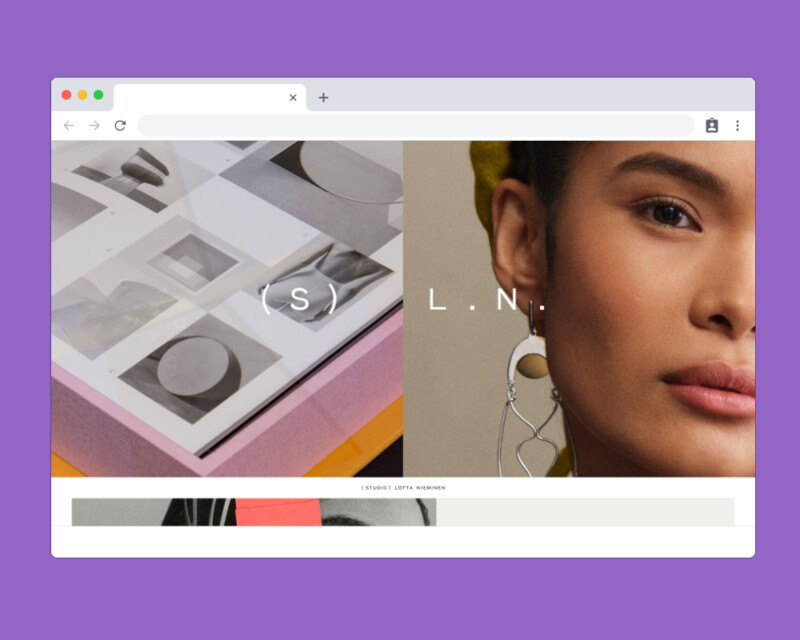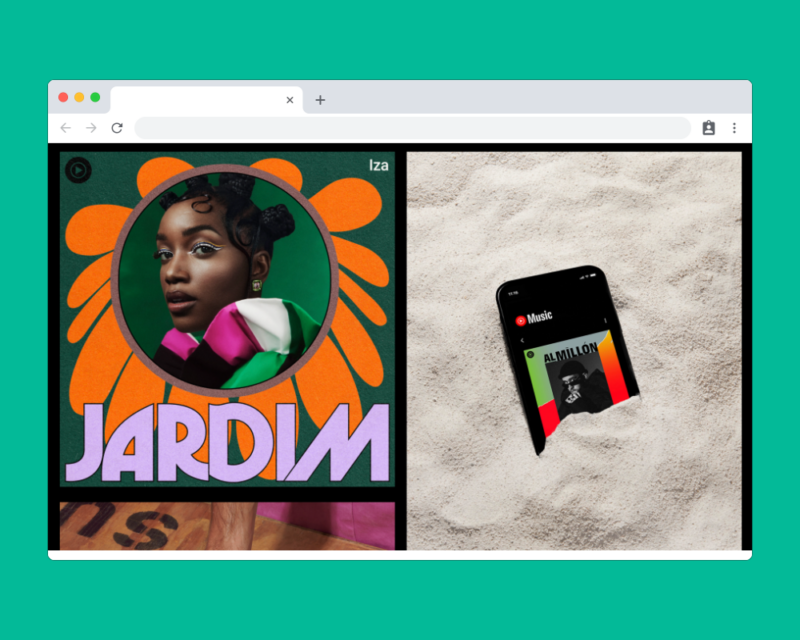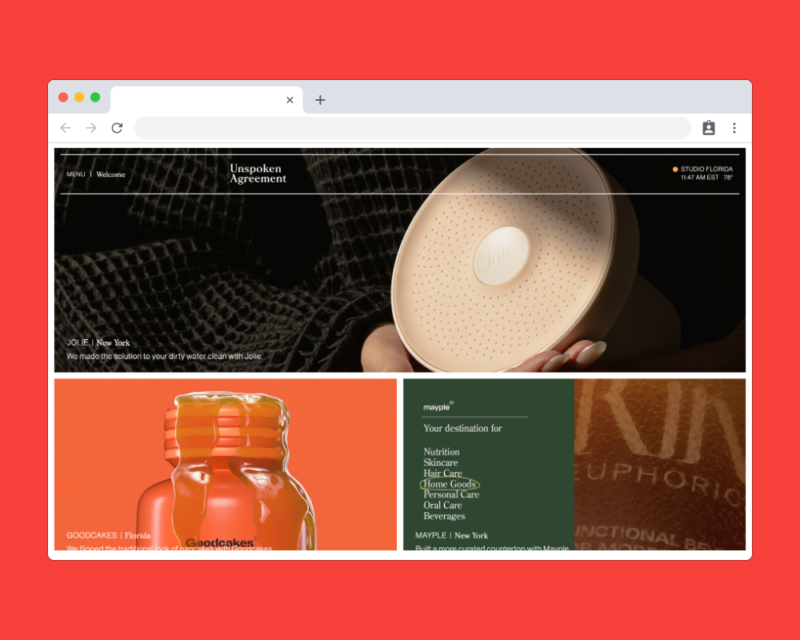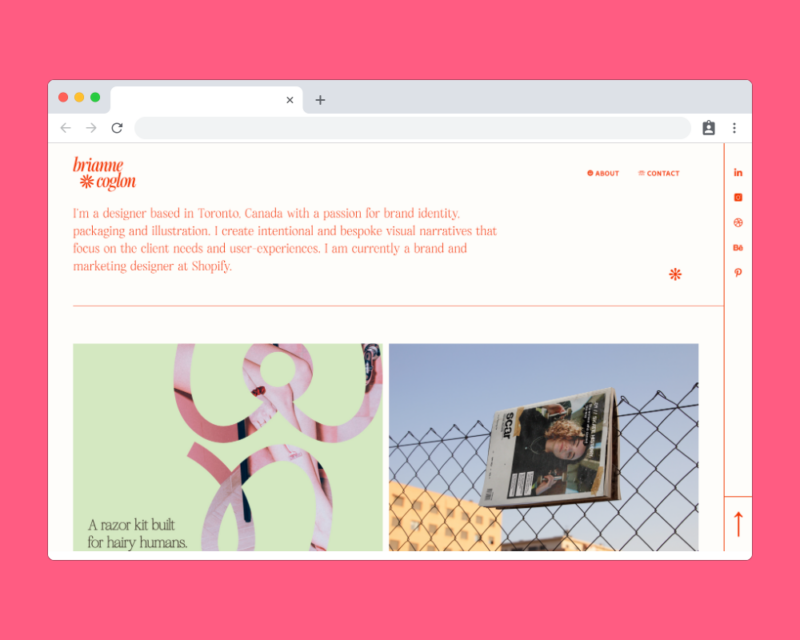35 Best Graphic Design Portfolio Examples & Tips to Create Your Own Portfolio

Putting together a kick-ass graphic design portfolio isn’t just something you need to worry about when you’re a student. You need to think about maintaining, improving and evolving your portfolio throughout your graphic design career.
If you’re looking to get your portfolio to the next level, then below you’ll find a selection of 35 graphic design portfolio websites to inspire you, curated by teachers and graduates from our graphic design course. We also offer our very best graphic design portfolio tips to help you raise your portfolio and make it your best tool for career success.
Want to improve your graphic design skills and get the help of experts while creating your portfolio?
What is a Graphic Design Portfolio?
A graphic design portfolio is a collection of a designer’s work. Traditionally these would have been a folder or bound volume, but nowadays a large majority of graphic designers have a document (most likely a pdf) that showcases the best of their design work from across their career—more on what a designer might put in their portfolio below. Graphic designers then use these portfolios as a ticket to the industry—they’ll be shown to any employers or potential clients before they decide if they want to work with you.
So, a winning portfolio is vital when you’re going for a new job. But that’s not all. You might be called in at a moment’s notice to chat with your art director to discuss a promotion opportunity or a hot new project you didn’t even know about. And you don’t want to be caught short by a graphic design portfolio that’s not all it could be.
What Should a Graphic Design Portfolio Include?
As we said before, a graphic design portfolio is a collection of a designer’s work—so it should showcase exactly what you can do. It doesn’t have to contain every single project you’ve worked on since you first learnt InDesign, instead it should reflect who you are as a designer no matter where you are in your career—so pick and choose your top projects that display your full range of skills.
The work in your portfolio shouldn’t just be the finished, polished product either, you should use your portfolio to show process too. It’s a great idea to show how you got to that polished product, from your initial concept and ideas onwards. Again, your portfolio is all about showing you as a graphic designer and what you are able to do.
35 Inspiring Graphic Design Portfolio Examples
1. Aries Moross

2. Lotta Nieminen

3. Maria Vazquez

4. Mike Kus

5. & Walsh

6. Gabrielle Adam
7. Jonathan Barnbrook

8. Lauren Hom

9. Juliette van Rhyn

10. Kind Studio

11. Craig Black

12. Hattie Stewart

13. Gabriela Namie

14. Carlos Bocai

15. Anthony Burrill

16. Lisa Maltby

17. Flick Eriksson

18. Mike Perry

19. Anton + Irene

20. Kris Andrew Small

21. Tobias Van Schneider

22. Studio Chenchen

23. Unspoken Agreement

24. Ben Anthony

25. Beci Orpin

26. Xavier Cussó

27. Leslie David

28. Snask

29. Wade & Leta

30. Marleigh Culver

31. Yul Moreau

32. Brianne Coglon

33. Koto Studio

34. Indre Klimaite

35. Sylvan Hillebrand

Download our “Guide to a career in Graphic Design”
The Ultimate Guide on how to learn Graphic Design even if you are a beginner.
Tips for putting together a great graphic design portfolio
Inspired by these amazing graphic design portfolio examples, and ready to start improving your current portfolio? Well, follow these expert graphic design portfolio tips, and you shouldn’t go far wrong…
1. Let go of lesser work
When you’ve put a lot of time, effort and emotional energy into a particular project, you naturally want to show it off to people and include it in your graphic design portfolio. But if you want your portfolio to be the best it can be, it needs to be ruthlessly edited. And that means being tough with yourself about only including the very best work.
There’s no hard and fast rule about how many pieces to include, but remember that you can’t predict what people will dive into, and so your reputation is only as good as your last good piece. More reason, then, to ditch the weaker pieces, and only include the work you can be truly proud of. Since you have a short amount of time to grab the art director’s attention, ideally, you should include 10-12 top quality pieces that highlight your best work to make the most impact.
As Shanti Sparrow, head of teaching at Shillington New York points out:
You are only as good as your worst project, so you must learn to edit and let go. By including projects of varying quality, an employer may think you are inconsistent. Ask a peer or mentor to honestly critique your work and either ‘improve or remove’ the problem areas.
2. Include the kind of work you want more of
There’s a qualification to the idea that you should only include your best work. Even if a particular project is brilliantly worthy, it’s still worth considering leaving it out if it’s the kind of work you want to move away from in the future.
Clare Terry, director of Shillington Australia, puts it bluntly. “Like attracts like, so ask yourself: does your folio reflect the work you’d like to attract? If not, add more of those clients and projects in.”
For example, if you’ve done a lot of digital design projects, but you want your next job or freelance gig to be focused on print design, then you need to tailor your design profile accordingly. People are not mind-readers, and you have to tailor your brand visually, just as you would a brand you were working for.
As Jimmy Muldoon, teacher at Shillington New York, points out:
Does your portfolio reflect who you are today? As people and designers, we’re constantly evolving. Make sure your portfolio authentically represents who you are now.
[embedded content]
It’s one of those annoying pieces of advice that’s easy to dish out, much more difficult to do. But in reality, numerous employees have told us they want to see “some of your personality” come through in your portfolio.
Don’t go over the top with this: it’s the kind of thing that can backfire if done casually or thoughtlessly. But it’s worth considering if there’s any way you can show a little of who you are through your portfolio, whether that’s through the work you curate, your personal branding, the way you present it, the copy you write, or any other method.
4. It doesn’t have to just be client work
When you’re still a student on a graphic design course, it can be tricky to find enough work to fill a portfolio, and tutors will usually advise you to generate other design work outside of normal client relationships, including side projects, pro bono work and competition entries.
And in principle that doesn’t stop when you finish your course, either. Later in your career, even when you’ve had years of experience in a design studio, you may still find these approaches useful in making your portfolio better. Especially when it comes to highlighting the kind of work you want to do in future, which your current employer may be preventing you from doing.
5. Focus on the process, not just the finished work
The biggest mistake many graphic designers make with their portfolios is only showing the finished work. That’s frustrating for many potential clients and employers, who typically want to know things like who else was working on the project, what your contribution was, what the brief was, what the challenges were in fulfilling it, and how you went about overcoming them.
Very little of what can be seen in one glossy final image, so make sure there’s extra content that shows the process you went through to get there, including sketches, screenshots and other works-in-progress where appropriate.
Designer and illustrator Jane Bowyer stresses that not every project you include needs to have been a success from start to finish:
Don’t be afraid to discuss where things went wrong with a piece of work, but consider talking about what you learned from the experience, rather than focusing on the negative.
6. Think about formats
Nowadays, a portfolio typically appears in the form of a web page or series of web pages. But there may be times when that isn’t the best solution.
For example, you might be having an interview or meeting in a place with no Wi-Fi and where mobile internet is choppy or non-existent. So it’s always good if you can put together a PDF portfolio that you can store on your laptop or tablet, and put on a USB stick in case the other party wants to have a look through too.
Also, while a physical, printed portfolio is no longer expected by most, it certainly won’t harm your prospects to produce one, and may well help endear you to the other party, who’ll appreciate you going the extra mile.
It’s also useful to have a presence on an online creative platform like Dribbble or Behance—but don’t spread yourself too thin; only commit to one of these if you can devote enough time to do one well. An outdated profile is only going to worsen your chances of consideration.
Employers will also be expecting you to have some kind of social media presence, too. Again, focus on one or two platforms you can consistently maintain, rather than trying to populate all of them. But it’s important to have a design-specific account that’s separate from your friends and family images.
7. Check your spelling
While a graphic design portfolio is primarily about visuals, don’t think that words aren’t important. When people spot a spelling mistake in your work, it’s usually taken as a sign of sloppiness, laziness or a don’t care attitude.
That might seem unfair: after all, everyone lets a typo slip once in a while; if they claim they don’t, they’re simply lying. But harsh judgements like that are simply the world we live in, so it’s vital that you double- and triple-check every word you write, and then get others to do so too (as they will inevitably spot something you’ve missed).
8. Ask for critiques
Of course, spelling mistakes aren’t the only reason to show other people your portfolio. One of the most straightforward and reliable ways to improve a graphic design portfolio overall is to get it critiqued by others, whether that’s a colleague, your creative director, a tutor or even just a friend in a related profession, such as the media.
Not everyone does this because quite frankly no one likes to be told that the thing they’ve poured their heart and soul into isn’t perfect. But isn’t it better to be told that by someone who doesn’t have a big influence over your future, and rather than finding out when it’s far too late?
9. Practice talking through your portfolio
However awesome your portfolio is, if you just walk into an interviewer’s office, show it to them, and sit back waiting to be praised, you’ll probably be waiting a long time. In reality, you must walk them through it, step by step, explaining what they should be looking at and why it’s relevant.
Again, this is something that’s best practised beforehand, so you don’t stumble over your words or get lost halfway through. We’ve all done that at one stage or another, so the maxim ‘practice makes perfect’ really does apply here.
10. Put in the hours
If all this sounds like a lot of work, then you’re correct: if you’re doing everything right, it will be. But equally, you will get back the time you’ve spent tenfold in terms of the career and freelancing opportunities that a killer portfolio opens up.
It’s natural to feel occasionally feel aggrieved about the hours you’re putting in. After all, why can’t they just take your word for it that you can do the job, or complete the freelance project? Whenever you feel like this, though, think about how they see it. They’re considering investing their hard-earned money in you, and they don’t want it to go to waste.
11. Get Help from an Expert
An absolute key step in creating your own graphic design portfolio is getting help from someone who knows—and excels—at what they’re doing. An expert, in this case a practicing graphic designer, will be able to show you what you’re doing well and what you can improve in your portfolio. Being a graphic designer, they can show you exactly what a graphic designer wants to see.
The best way to get expert help on creating your own portfolio is Shillington’s graphic design course. In our innovative graphic design bootcamp, expert practicing graphic designers guide you everything you need to know to work as a graphic design before graduating fast—just three months full-time or nine months part-time—with a complete graphic design portfolio ready to apply for jobs in the industry. In fact, some of the portfolios you have just seen were created by Shillington graduates.
Amazed by these portfolios and would love to create one of your own? Study graphic design or upskill at Shillington with our online graphic design course. Follow this guide on how you can get started as a graphic designer, even if you’re a total beginner.
Want to learn more about our graphic design course?
Learn More
https://blog.shillingtoneducation.com/graphic-design-portfolio/
